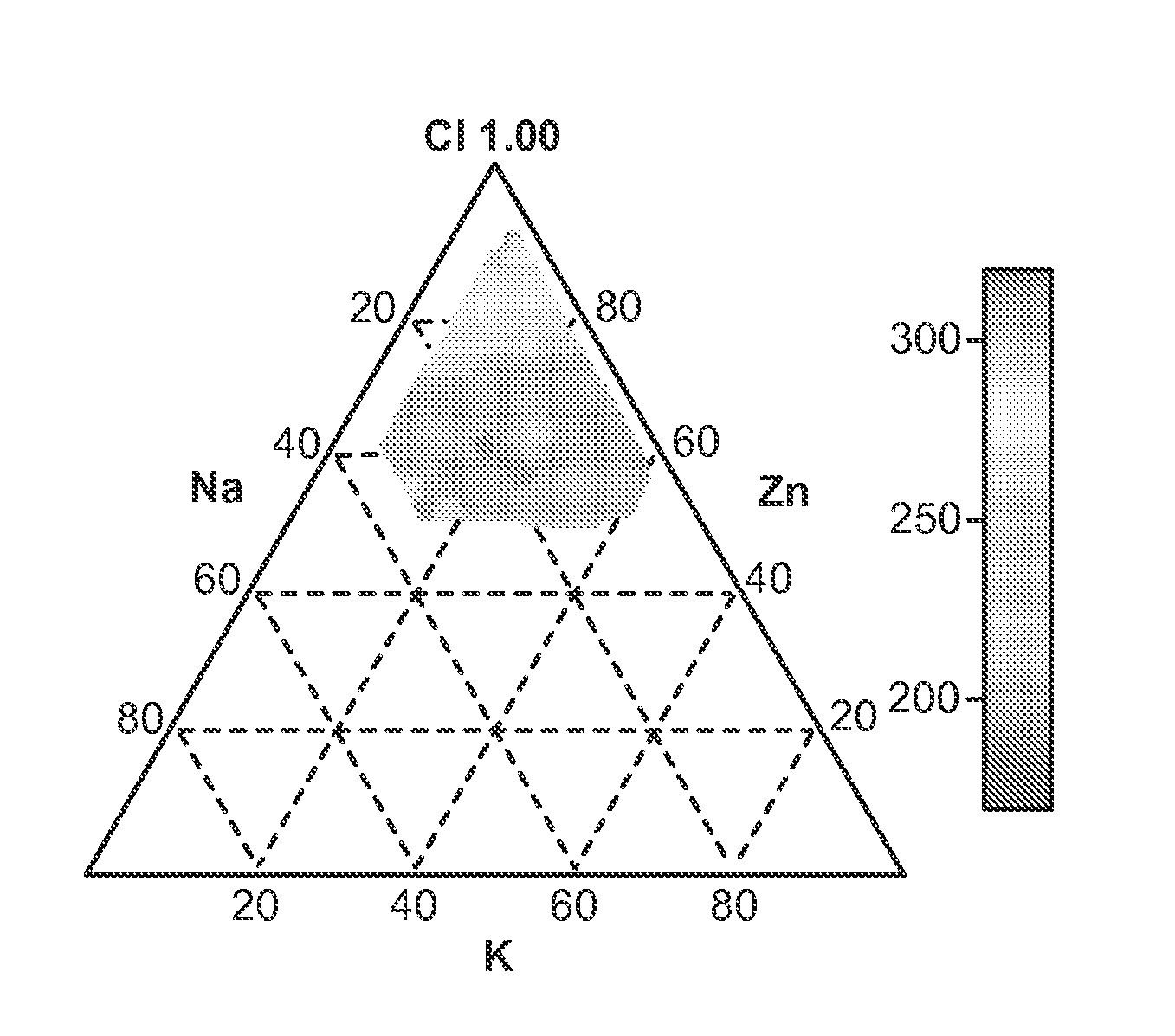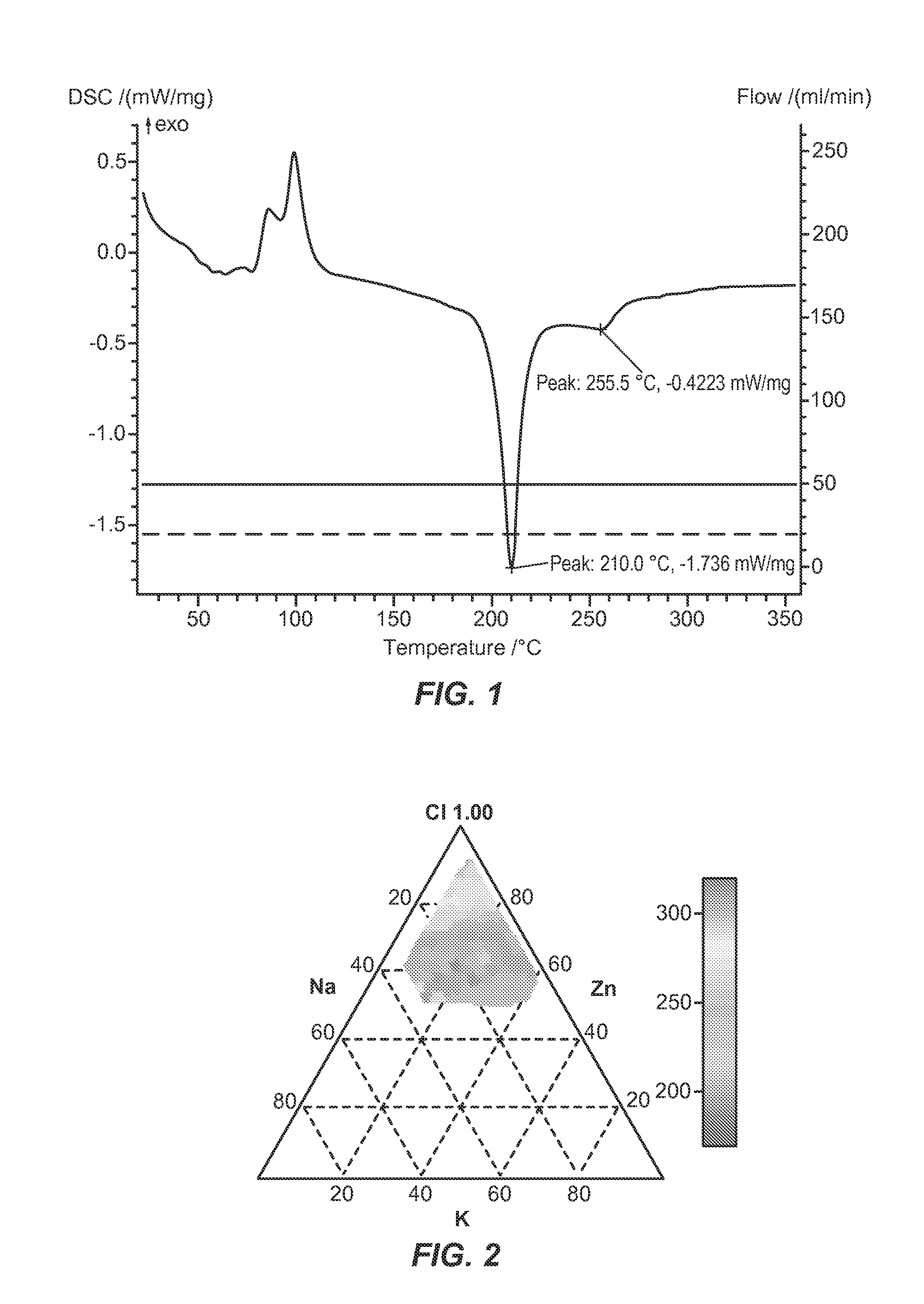Thermal energy storage with molten salt
- Summary
- Abstract
- Description
- Claims
- Application Information
AI Technical Summary
Benefits of technology
Problems solved by technology
Method used
Image
Examples
example 1
[0053]To prepare laboratory-scale samples of the salt mixtures, each salt component was dispensed into a well on a borosilicate glass plate. The samples were heated in a furnace at a temperature of 175° C. for 2 hours and raised to 400° C. for 8 hours to melt and homogenize the sample. The sample was maintained at 115° C. after melting until it was removed from the furnace and allowed to cool to room temperature in a desiccator. The sample was inserted into the PMP Workstation and the temperature was set to 100° C. and allowed to stabilize for 60 minutes. The temperature was then ramped to 315° C. at 20° C. / hour.
[0054]Salt compositions can be described by specifying the mass of each salt component, which can be translated to molar percent of each ion by those skilled in the art. A salt mixture of any desired size with the same properties (melting point and thermal stability) can be prepared by increasing the amount of each component but maintaining the relative proportions. FIG. 1 s...
example 2
[0055]Further examples of each system are given below in Tables 1-4 below. These examples are not intended to restrict the scope of the present invention but merely illustrate possible embodiments; other compositions are possible. The composition of each is expressed in molar percent on an ion basis, which can be converted to weight percent by those skilled in the art. The melting point is expressed in degrees Celsius as measured by the PMP.
TABLE 1Composition and Melting Point Data for Na—K—Zn—Cl MixturesNaKZnClMeltingNo.(mol %)(mol %)(mol %)(mol %)Point (° C.)11.35.293.5100.0295.8521.530.268.2100.0258.053 4.8 18.9 76.2 100.0 262.55 49.05.285.8100.0283.9558.330.361.4100.0239.45611.817.570.6100.0243.75714.38.077.7100.0273.35814.634.850.6100.0223.859 17.727.255.1 100.0215.451021.224.654.2100.0215.351123.924.251.8100.0212.7512 31.0 8.760.3100.0132.38.689.1100.0286.05142.333.464.3100.0155.421.073.6100.0251.45168.7 8.382.9100.0283.05178.633.657.8100.0214.451812.020.867.2100.0219.751915.5...
PUM
 Login to View More
Login to View More Abstract
Description
Claims
Application Information
 Login to View More
Login to View More - Generate Ideas
- Intellectual Property
- Life Sciences
- Materials
- Tech Scout
- Unparalleled Data Quality
- Higher Quality Content
- 60% Fewer Hallucinations
Browse by: Latest US Patents, China's latest patents, Technical Efficacy Thesaurus, Application Domain, Technology Topic, Popular Technical Reports.
© 2025 PatSnap. All rights reserved.Legal|Privacy policy|Modern Slavery Act Transparency Statement|Sitemap|About US| Contact US: help@patsnap.com



